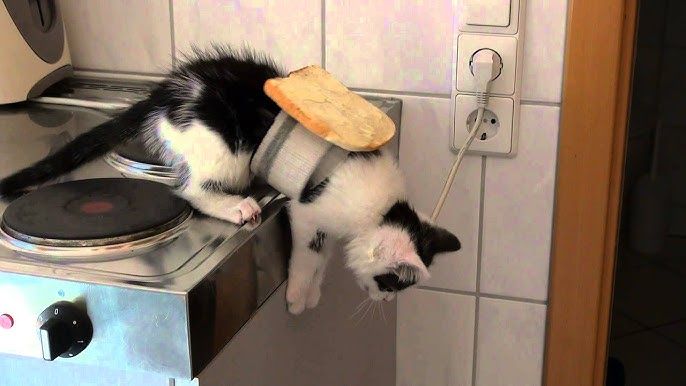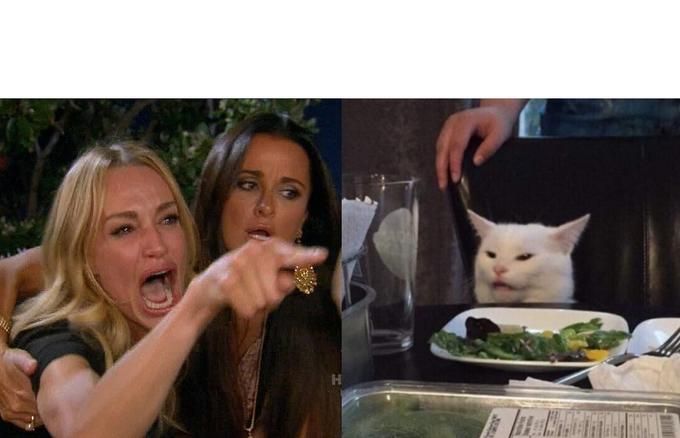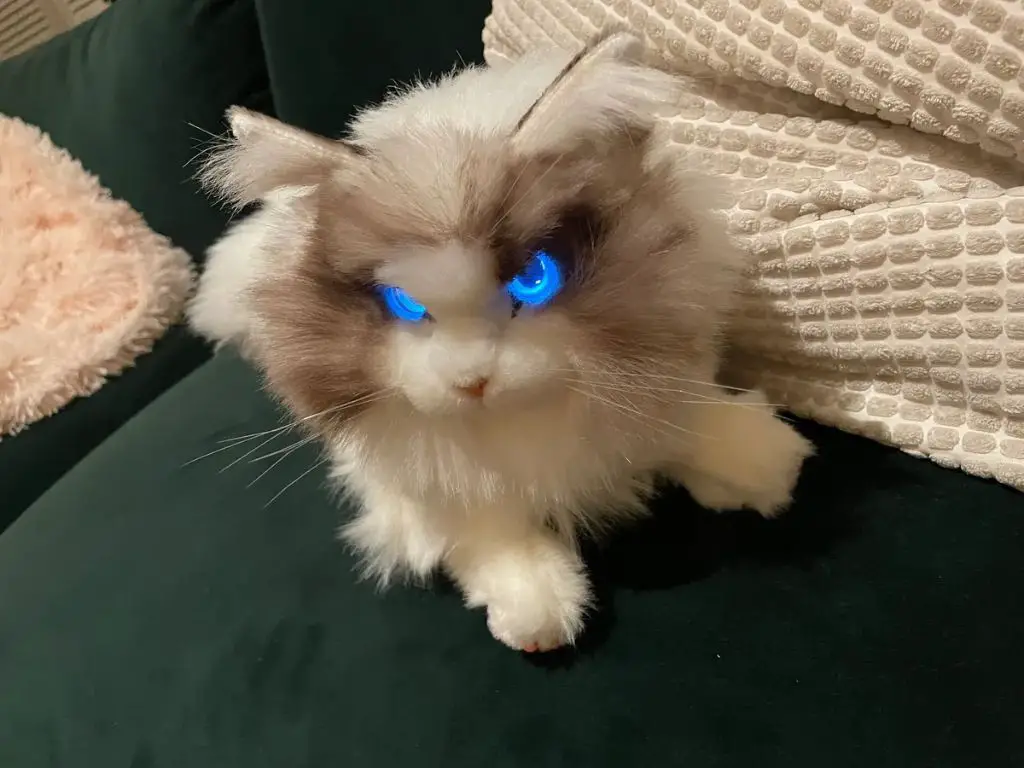What Are Cat Generators?
Cat generators are generative AI systems that create unique images of fictional cartoon cats. They use neural networks and machine learning algorithms to generate completely new cat images that don’t exist in the real world.
Some popular examples of cat generators include This Person Does Not Exist, NeuralBlender, and Artbreeder. These tools allow users to instantly generate endless variations of colorful, cute, and creative cat images with just the click of a button.
Cat generators create images through a process called generative adversarial networks (GANs). This involves training two neural networks against each other – one generates new images while the other evaluates how realistic they look. Over time, the generator network learns to create increasingly believable cat images.
There are many different types of cat generators. Some focus on creating just cat faces, others generate full body cats in different poses, outfits, or situations. More advanced tools allow users to customize details like fur pattern, color, accessories, background, and more before generating a unique image.
While cat generators rely on AI to produce original creations, they don’t actually understand what cats are. They simply learn visual patterns and associations from vast training datasets of real cat images in order to generate new examples statistically.
Pros of Using Cat Generators
One of the main pros of using cat generators is that they provide a fun and entertaining way to kill time and tap into one’s creativity. The customized and often whimsical cat images generated can provide a much needed break from the stresses of everyday life. As one source points out, creating silly or artistic images of felines allows for “creative expression and imagination.” Cat generators also allow users to customize cats to their heart’s content, generating cats in different poses, sizes, colors and artistic styles.

Being able to quickly generate all sorts of unique digital cats provides a creative outlet for cat lovers and artists alike. As opposed to having to find or take photos of actual cats, cat generators provide endless variations available in just a few clicks. This ability to easily explore and experiment with different visualizations of cats is a major draw. Overall, cat generators offer a fun distraction that stimulates creativity through their wide range of cat customization options.
Cons of Using Cat Generators
While cat generators can provide entertainment, there are some ethical concerns with using AI to generate fake images of cats. Some argue that creating artificial cats trivializes living animals. Additionally, some cat generators upload user data to generate images, raising privacy concerns. There is little transparency into how user data is used and secured with these services. Since the generated cats are artificial, questions arise around presenting AI creations as real. While most understand these are not real animals, there is still debate around the ethics of creating false depictions. Using cat generators simply as entertainment seems harmless, but thoughtfully considering their implications is wise.
Most Popular Cat Generators
Some of the most well-known and widely used cat generators include:
This Cat Does Not Exist – This site uses a deep learning algorithm to generate realistic images of cats that don’t actually exist. Each time you refresh the page, you get a new randomly generated cat image. The AI examines thousands of cat photos to identify patterns and features to combine into new images.
Catbox – This cat generator allows you to customize the output, choosing colors, expressions, accessories and more for your fake cats. It offers a gallery of pre-generated images as well as options to generate custom cats on demand. You can even animate the cats and download videos.
Scruffle Kittens – This is an AI model created by Anthropic using Stable Diffusion. You can generate customizable cat images by providing text prompts about color, pose, background and more. It tends to produce more varied, stylized and whimsical cat images compared to other generators.
How Cat Generators Create Images
Cat generators primarily rely on generative adversarial networks (GANs), a type of artificial intelligence that uses two neural networks – a generator and a discriminator. The generator network creates images, while the discriminator network tries to determine if they are real or fake. Through this adversarial process, the generator learns to create more and more realistic images over time.
The generator starts by creating images from random noise, with no knowledge of what a cat looks like. The discriminator then reviews these images and determines which ones look fake. The generator takes this feedback and tweaks its process to produce better images on the next try. Over many iterations, the generator learns to create photorealistic cat images that can fool even human eyes.
GANs leverage the power of deep learning and neural networks to gain a deep understanding of visual concepts like shape, texture, lighting, and perspective. By training on thousands or millions of cat images, the AI builds an intricate model of what defines cat features and appearances. It learns to synthesize new examples with great detail and variation.
Other techniques like computer vision, segmentation, and style transfer may also assist cat generators in composing images. For example, computer vision can identify the key elements of a cat like eyes, nose, fur, etc. Segmentation maps out the spatial regions of the cat. Style transfer applies the texture, colors, and lighting from real cats to the generated images. Combined, these AI capabilities allow cat generators to produce incredibly lifelike and varied cat photos and art.
Ethical Concerns
Cat generators raise a number of ethical concerns primarily around the misuse of technology, data privacy, and authenticity. While cat generators are created for fun and artistic purposes, the artificial intelligence technology behind them has further-reaching implications. There is concern that the same AI can be misused to spread misinformation or fake imagery
There are also data privacy concerns, as cat generators require large datasets of cat photos to create their images. Collecting these datasets raises questions around consent and the privacy rights of pet owners. Some believe companies should be more transparent about how they source and label their training datasets.
Authenticity is another ethical issue. While AI-generated images of cats may seem harmless, some argue they can contribute to the larger spread of misinformation and erode trust in digital content overall. There are also philosophical debates around whether synthesized images diminish the value of real creativity and art.
In summary, while cat generators create entertaining and artistic content, experts argue companies should carefully consider the unintended impacts of releasing AI systems that synthesize fake imagery and content. There should be open discussion around ethics and responsible innovation.
Impact on Real Cats
Some critics have expressed concern that cat generators may actually reduce adoption of real cats. The worry is that if people can generate endless cute cat photos digitally, they may feel less inclined to adopt cats from animal shelters.
However, there is little evidence to support this claim so far. In fact, one study from the University of California found the opposite effect. People exposed to cute cat photos from generators were more likely to express interest in adopting a cat in the future compared to those who did not see the generated images.
Psychologically, interacting with cat generator images may awaken people’s appreciation and love for real cats. The generated images are no substitute for having an actual purring cat at home. If anything, cat generators may actually promote adoption by reminding people how adorable and delightful cats can be.
More research is needed on the potential psychological effects cat generators have on attitudes towards real cats. But so far, there’s no data to suggest these AI tools discourage adoption. As with any technology, the actual societal impact depends on how people choose to use it.
Creative Uses
Cat generators have become popular for creating unique and humorous cat images for entertainment and creative purposes. Many people use cat generators to make memes, funny profile pictures, digital art, and more. The seemingly endless combinations of cat breeds, colors, expressions, accessories, and poses have sparked people’s creativity.

Subreddits like r/AbsoluteUnits on Reddit have entire threads dedicated to sharing novel and absurd cat generator images. People compete to create the most outrageous cat pictures. The images range from cats in wizard hats to cats with muscles bulging out of tuxedos.
Digital artists often use cat generators as inspiration or assets. They might create a one-of-a-kind cat character for a story. Combining generated cat images with other digital art can produce some beautiful and thought-provoking artwork. Even major brands like Netflix have used cat generator images for humorous social media posts.
The endless variety and customization of cat generators has unleashed people’s creativity. While often intended as lighthearted fun, the unique images produced can also make profound statements and touch people emotionally. In the right hands, even a silly cat generator can create great art.
The Future of Cat Generators
Cat generators have advanced rapidly in recent years thanks to improvements in AI and machine learning. Looking ahead, experts predict cat generators will continue to become more sophisticated and lifelike.

One exciting area of development is incorporating generators into physical robot cats that can move and behave like real felines. Companies like Caterpillar are already working on animatronic cat bots that leverage AI to be more realistic and interactive.
However, there are ethical concerns about how advanced cat generators could be misused to create Deepfake content or manipulate people’s emotions. As the technology continues maturing, developers must act responsibly and prioritize transparency regarding what is real versus AI-generated.
Overall, the future looks bright for cat generators to become even more lifelike and assistive. But maintaining ethical standards will be key as generators gain capabilities rivaling real cats.
Conclusion
In summary, cat generators offer both pros and cons. On the positive side, they provide a fun and easy way to generate cute cat images. However, there are valid ethical concerns about using AI to generate fake images that don’t depict real animals. Cat generators also raise questions about the potential impact on real cats, if the technology reduces public interest in adopting pets. While cat generators are currently more novelty than threat, it’s clear there is potential for misuse.
Looking ahead, cat generators will likely improve as AI image generation advances. More sophisticated algorithms may produce increasingly realistic and customized cat images. This could make it even harder to distinguish AI creations from real cats. Responsible regulation will be needed to prevent deception and uphold ethical standards. Overall, cat generators showcase both the impressive capabilities and potential risks of AI image generation. With thoughtful oversight, the technology can continue providing lighthearted fun for cat lovers, without harming real felines.

